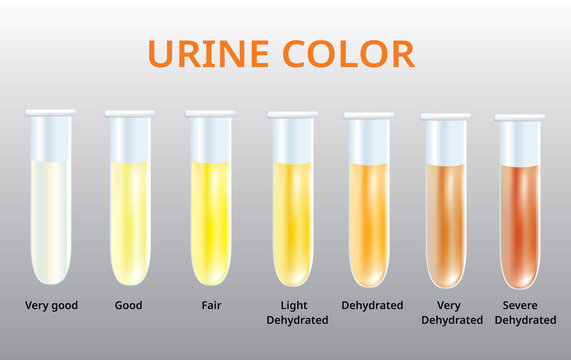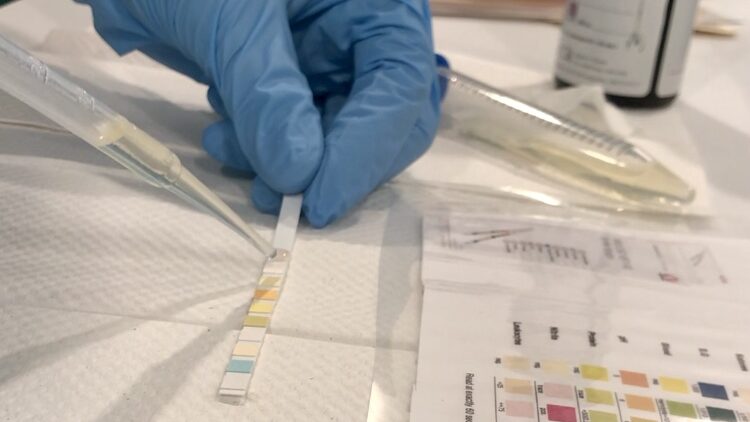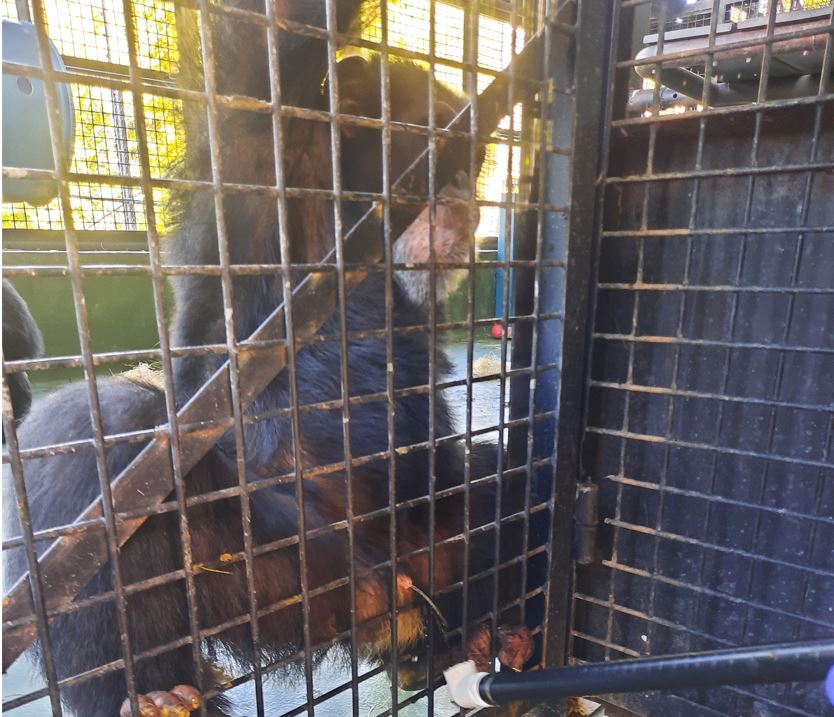
Pee, Please – It’s Urine Month!

By Kate Stiles
Go With the Flow
Recently, the stars seemed to have aligned in some particular magic order to bestow a very specific destiny on me for September. Currently, I have an almost two-year-old I am beginning to potty train; at the same time, we have a brand new 9-week-old puppy that I am also trying to housebreak. I’ve gotten extremely acquainted with the endless cycle of put the baby on the potty, put the puppy on the grass, chase after the baby with some wipes, mop up a puppy puddle with my foot, repeat until bedtime.
Normally going to work would be a break from this sequence, except it also happens to be urine month at Project Chimps! Now you see why I have decided to just embrace my destiny and go with the flow (the only urine pun here, I swear).
Urination Celebration
Don’t get me wrong, it’s actually pretty cool to work somewhere that celebrates urine. Believe it or not, pee is really an amazing thing! Every urine excretion you make is like a report card from your body, sending in a bunch of grades from most of its complicated systems via a few ounces of liquid. Urine can tell us everything from if the chimp has a urinary tract infection, to liver disease, to kidney issues. Because the chimps can’t tell us verbally if they’re not feeling well, their urine can speak for them. It allows us to treat symptoms we otherwise might not have any idea they were experiencing.

One of the most common things we look for in urine samples is the status of the kidneys. Occasionally we might find some protein or glucose in the urine; this can be indicative of kidney disease or diabetes. If a sample contains one of these factors, we can do a deeper probe on the remainder of the urine (our initial test requires just a few drops). We also would want to test the chimp again on a different day to determine if there is a pattern of these abnormal findings. If our more thorough test determines that treatment is warranted, we will tackle this in the most appropriate way for the individual chimp—be it medication, diet, fluids, or all of the above.
Pee-pee Pre-test
Urine samples can be important in determining if a chimp needs to be anesthetized for a hands-on physical. Whenever we can diagnose and treat without anesthesia, we try to go that route, as it’s much easier on their bodies and immeasurably less disruptive to the chimp family. The social dynamic in a group of chimps is a delicate thing; removing a member from the group for even a short time can cause major ripples.
So how do we do it? Everyone pees, so it should be easy, right? Well, sometimes.
Collecting the Sample
Believe it or not, training an animal to do a behavior their bodies just do automatically, and asking that they do it on command, can be one of the trickiest feats to accomplish. For some reason, intrinsic behaviors are often the hardest to make the lightbulb go on for. So, we start training this in two parts.
First is encouraging them to pee more often. Throughout their daily cleaning, caregivers carry special treats in their pockets (walnuts, raisin boxes, honey sticks, etc) and when they hear a chimp peeing, they seek that chimp out and praise them with a “good pee!”, and offer them a reward. It usually takes many repetitions of this for the chimp to realize that they are getting the treat just for urinating. But once they make that connection, they tend to become walking waterfalls.

That’s when we introduce the next part—the collection device. Our vet assistant Jesse built a device for every villa, constructed out of PVC and a removable cup attachment. Chimps are territorial animals, they generally don’t appreciate foreign items entering their space. Anything that does is prone to destruction (hence why we never enter their enclosures with them!). Urine collection requires training of both the individual being collected from as well as the group as a whole to allow us to stick the device through the mesh, underneath the urinating chimp, and back out again all in one piece (many a device has been lost to Jamie, in particular!). Once they allow this intrusion, we pair it with the “go pee” cue. The sample we collect is brought to our clinic to run the urinalysis. From there we have a great idea of what their overall health status is.
The Pitter Patter of Fall
For the rest of September, urine will continue to be the theme of my life, as the stars have foretold. I will continue to put the baby on the potty, the puppy in the yard, and the collection devices under the chimps—hopefully never mixing up the three. I feel confident that by the end of the month, many of the chimps will have the routine down… but all bets are off on the tiny human!
Urine collection is a routine focused theme every fourth month, rotating with dental observations, weight collection, and deworming. You can assist our behavior team in keeping the chimps in great health with these regular medical behavior sessions by making a monthly contribution today.
